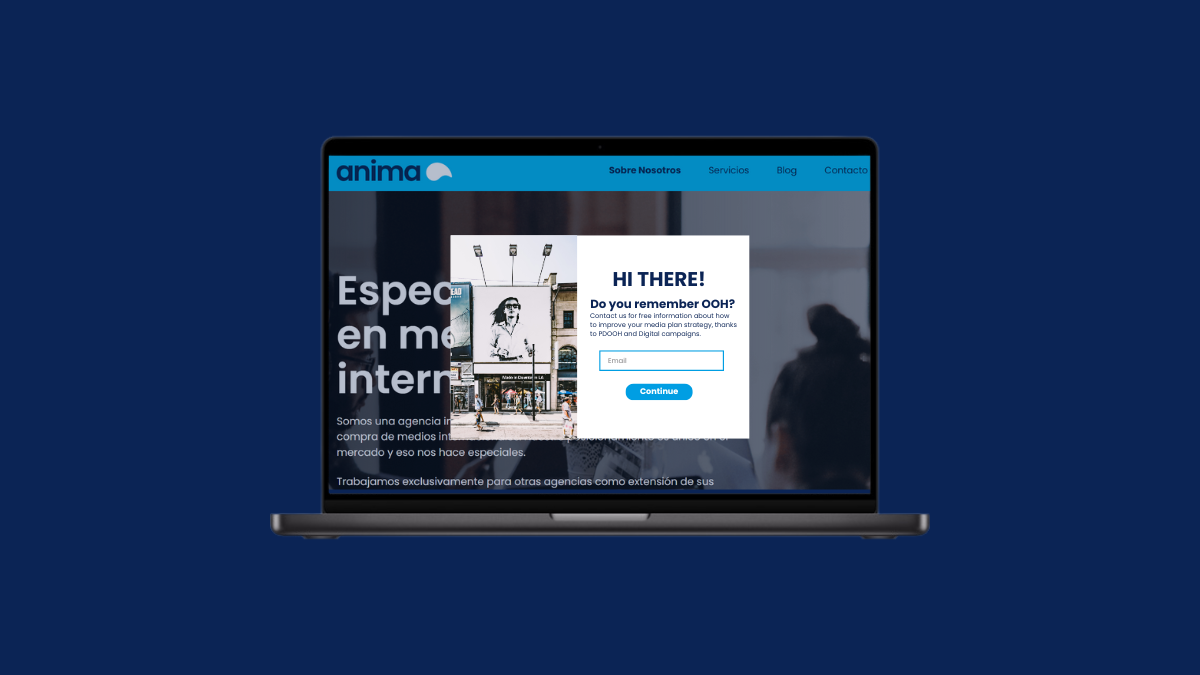

July, 2025
For years, many brands have relegated outdoor advertising to a secondary role within their media strategy, traditionally viewing it as a channel for large budgets, useful for brand awareness campaigns but less effective in metrics such as ROI, conversions, or direct sales impact.
However, something has changed. Those who continue to underestimate the role of OOH campaigns could be making one of the costliest strategic mistakes in marketing: excluding out of home from the plan.
OOH is no longer just about branding; it's about performance
In today's society, where decisions are made in seconds and consumers are constantly on the move, putting all bets on digital performance may not be the best strategy. Potential customers walk through cities, check their phones, enter stores, or use public transport countless times a day. And at all these moments, OOH can impact them with highly visible, emotional, and strategic messages.
We're not just talking about generic billboards on highways anymore. Today, OOH includes digital, programmatic, interactive, and geolocated formats. OOH is now also about performance.
What really happens when you remove OOH from the media plan?
Various studies by Analytic Partners and the IPA (Institute of Practitioners in Advertising) demonstrate something decisive: if you remove OOH (and TV) from the media plan, the return on investment (ROI) from digital media can drop by up to -49%. This means it not only decreases but turns negative, implying that in some cases, a digital campaign without offline support not only yields less but can also lose money directly.
Why does this happen? Simply because digital channels need "traction" to be effective. This traction is often generated by the brand's presence in physical environments and the trust, recall, and familiarity produced by a well-executed outdoor advertising campaign.
OOH enhances the entire media ecosystem
Outdoor advertising now includes all formats found in public spaces, from billboards and transport advertising to urban furniture and digital screens (DOOH), fully integrated with technology and offering real-time measurements.
Therefore, OOH acts as an amplifier and a key tool to enhance the performance of online campaigns, and according to data from campaigns audited by Analytic Partner:
• Search: increases performance by up to 54% when combined with outdoor advertising.
• Social media: generates around 20% more effectiveness in campaigns that include OOH.
• TV and radio: increase effectiveness by approximately 17%.
• Press: although it´s the medium that benefits the least from mixing with OOH, it still manages to increase its reach by at least 7%.
But why does OOH work so well?
Many variables explain why outdoor advertising significantly boosts the performance of other media:
• Cannot be ignored: you can't close a billboard like you can close a pop-up. OOH advertising is visible, unavoidable, and omnipresent.
• Generates trust: seeing a brand in the physical world lends it legitimacy. Not everyone puts their logo on the street.
• Activates recall: by being present in consumers' daily routes, it continuously and naturally reinforces brand awareness.
• Provides context: to campaigns in other channels because its messages can be adapted to location, time, and audience (DOOH).
• Complements digital marketing: outdoor advertising activates users, leading them to search, interact, or convert online.
• Increases search intent: generating what is known as "search lift": users are more likely to search for a brand after seeing it in a physical environment. In fact, according to studies, up to 46% of online brand searches may be motivated by a previous OOH impact.
Consumers no longer separate online and offline
Users can now see an ad on the street, search for it on their phone immediately, and make a purchase online that night. The consumer journey is no longer linear or predictable. Therefore, treating the media plan as if channels were separate compartments has become a strategic mistake.
Considering this, it's obvious that well-integrated OOH advertising planning can be the emotional and visual starting point that activates all other channels.
What do you lose by removing outdoor advertising from your plan? Among other things, without outdoor advertising, campaigns lose physical visibility and thus the activation of multiple digital searches. Additionally, you lose the trust that a brand with a physical, tangible presence generates among consumers, and therefore the demonstrated improvements in the profitability of other campaign channels.
Digital Out Of Home (DOOH): the best of both worlds
If traditional OOH has impact, DOOH elevates it further. Today, you can activate digital outdoor campaigns with programmatic buying, dynamic creativities, personalized messages based on context (time, weather, traffic...), and absolute synchronization with real-time consumer journeys.
Thus, the outdoor channel behaves like a digital medium but with unbeatable physical visibility, offering an average ROI 39% higher than traditional online channels, a 48% increase in digital interaction (if consumers previously saw the same ad in outdoor advertising), and 46% more brand searches after seeing a DOOH ad.
Conclusion
In an ecosystem saturated with digital impacts, public space remains one of the most powerful assets for a brand. Removing outdoor advertising from the plan is not just eliminating a medium; it's giving up an enhancer of your entire marketing ecosystem and risking your ROI, missing the opportunity to connect with your audience at the moments when perceptions are truly formed, reducing your brand's visibility, and deactivating part of your digital funnel.
If you're looking for a profitable, visible, and coherent media strategy, OOH must be an essential part of your media mix.
Want to improve the performance of your strategy with OOH?
Strategically integrating OOH and DOOH into your media plan can make a difference. Talk to us, and together we'll design a strategy where online and offline enhance each other.
Contact us at hola@animaads.com